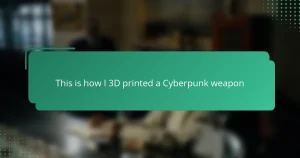Key takeaways
- Science fiction props enhance storytelling by making imaginative worlds feel tangible and relatable.
- Choosing the right materials and tools is essential for creating authentic and comfortable props.
- Attention to detail during the design and assembly process significantly impacts the final product’s quality.
- Patience and organization are crucial for overcoming challenges and ensuring successful project completion.

Overview of Science Fiction Props
Science fiction props have always fascinated me because they blur the line between imagination and reality. What is it about these intricately designed objects that captivates us so deeply? For me, it’s the way they bring futuristic worlds to life, making the impossible seem tangible.
From my experience, crafting or collecting these props is more than just a hobby—it’s a way to connect with a story on a personal level. I still remember the excitement I felt the first time I held a replica blaster; it was like holding a piece of another universe. Have you ever experienced that rush of wonder when a simple object transforms your perspective of a fictional world?
The variety of science fiction props is staggering, ranging from sleek gadgets to elaborate armor. Each piece carries its own story, reflecting the creativity and technology imagined by its creators. I often find myself pondering how much effort and passion went into designing these iconic items, and it inspires me to push my own creative boundaries.
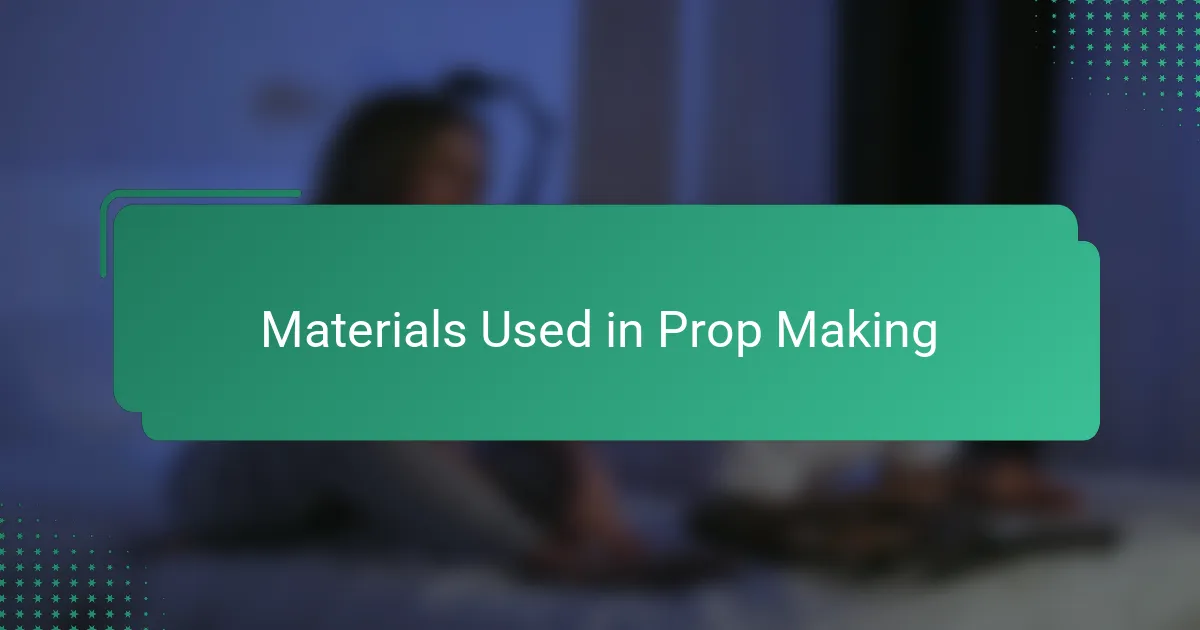
Materials Used in Prop Making
When I first started making my Iron Man arc reactor, choosing the right materials was a crucial step. I opted for lightweight plastics like acrylic and PVC because they allowed me to shape the core without making it bulky or uncomfortable to wear. Have you ever struggled to balance durability with comfort in a project? That was my exact challenge.
Metal parts also played a big role in giving the reactor that authentic, industrial feel. Small aluminum and brass components brought a sense of realism that plastic alone couldn’t achieve. Handling these materials reminded me of how prop makers on big movie sets combine different textures to tell a story beyond just the design.
Finally, I relied on LED lights and translucent filaments to mimic the reactor’s glowing core. The effect was magical—watching the reactor come alive with light made all the painstaking assembly feel totally worthwhile. It got me thinking: isn’t that the true power of props, making the unbelievable glow with a hint of reality?

Tools Required for Prop Building
Getting the right tools was a game-changer for me in making the Iron Man arc reactor. I quickly realized that basic household items wouldn’t cut it—I needed precision. Tools like a rotary tool for cutting and shaping, needle files for smoothing edges, and a soldering iron for wiring the LEDs became my best friends. Have you ever been amazed at how the right tool can take your work from clunky to clean almost instantly? That was exactly my experience.
I also found that having measuring tools like calipers helped immensely in keeping everything symmetrical and true to scale. It sounds a bit technical, but trust me, those small details make a huge difference when you want your prop to look professional. The patience required in measuring and cutting properly was a test of persistence, but absolutely worth it.
One thing I didn’t expect was how much I would rely on clamps and heat guns. Clamps held parts perfectly in place as glue dried, preventing frustrating slips. The heat gun helped me bend plastics carefully without cracking them—something I learned the hard way the first time I tried to force a bend with just my hands. Do you remember your first frustrating moment with a project? For me, it was precisely that, but each challenge taught me something new about the tools and materials.
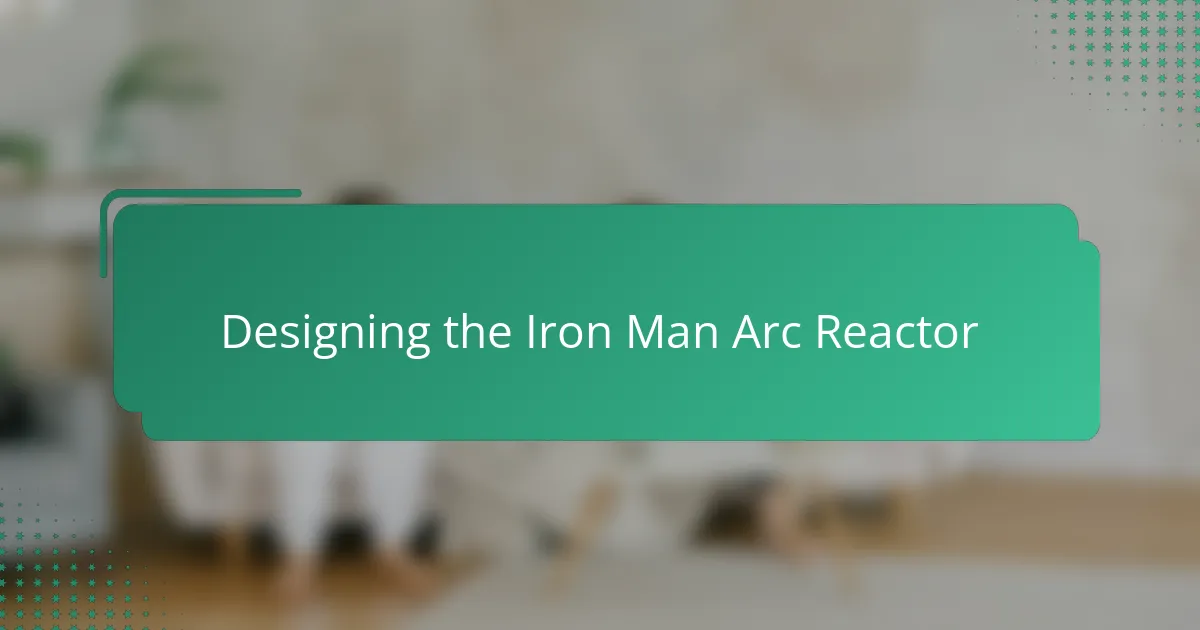
Designing the Iron Man Arc Reactor
Designing the Iron Man arc reactor was one of the most thrilling parts of the project. I remember sketching out ideas and trying to capture that perfect balance between sleek futurism and mechanical complexity. Have you ever found yourself lost in doodles, chasing just the right look without knowing exactly how to get there? That’s exactly how it felt.
I wanted the design to be faithful to the movies but also practical to build and wear. This meant carefully considering proportions and layering of parts, so the reactor wouldn’t just look good but also feel comfortable. It reminded me how much thought goes into prop design beyond what the eye immediately sees—functionality is just as crucial as style.
Choosing the right details to highlight was another big challenge. I focused on the glowing core’s radiating lines and the intricate metal framework because those elements define the reactor’s iconic look. Seeing those details come together made all the late-night brainstorming sessions worthwhile and, honestly, gave me a real sense of pride in what I was creating.
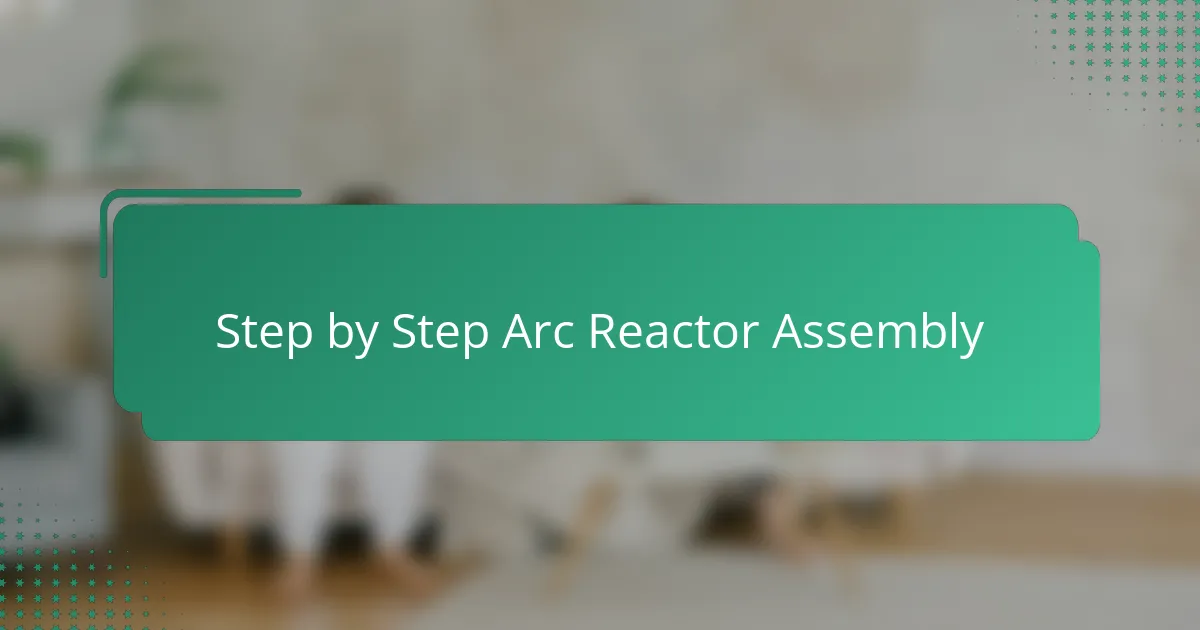
Step by Step Arc Reactor Assembly
Assembling the arc reactor was like piecing together a complex puzzle. I started by arranging the main parts—the core housing, the metal framework, and the LED setup—in the order they would fit best. Have you ever felt that satisfying click when all pieces slot perfectly? That’s exactly the moment I realized the design was coming to life.
Connecting the wiring to the LEDs required steady hands and patience. At one point, I thought I had blown a circuit because the lights wouldn’t turn on, but it turned out I’d missed a tiny solder joint. That experience taught me that meticulous attention to detail is key in prop building; every connection counts.
The final assembly involved securing everything with glue and screws, ensuring the reactor was sturdy but still lightweight enough to wear comfortably. Watching it glow for the first time, perfectly assembled, gave me a surge of accomplishment. Isn’t that moment what makes all the fiddly work worthwhile? For me, it was the best reward possible.
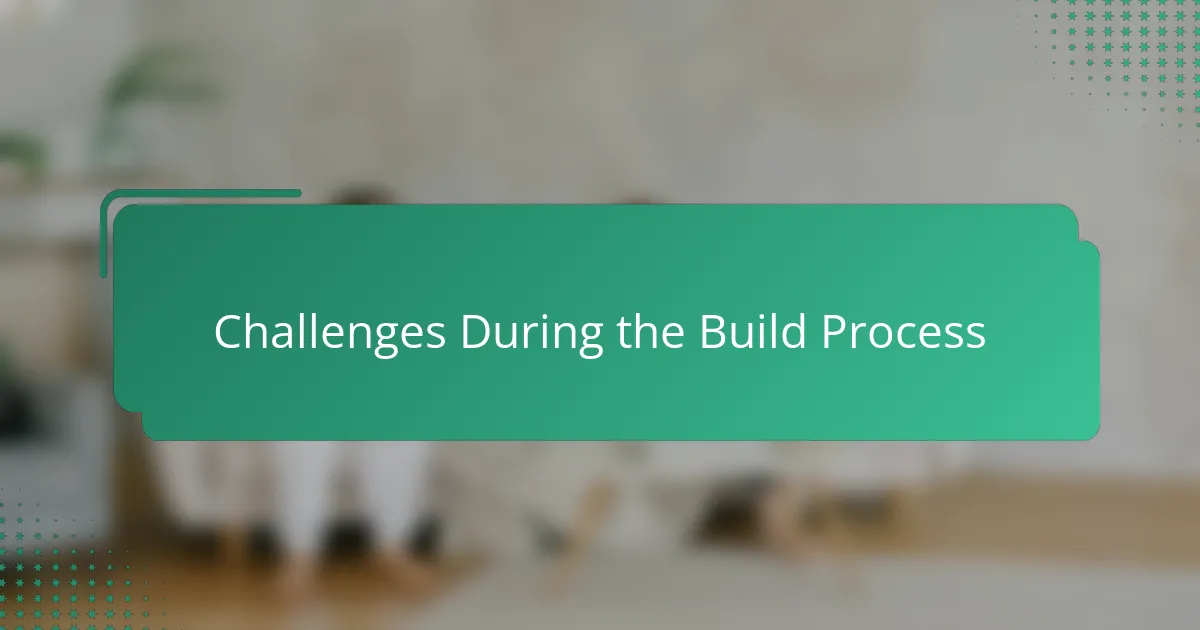
Challenges During the Build Process
Figuring out how to make the arc reactor both sturdy and lightweight was a real headache. I kept running into issues where pieces either felt too fragile or made the whole thing heavier than I wanted. Have you ever tried juggling two goals that seem to contradict each other? That constant balancing act really tested my patience.
Wiring the tiny LEDs brought its own share of headaches. At times, the connections were so fiddly that I found myself squinting and re-soldering the same joints multiple times. I remember one evening when frustration almost got the better of me—only to realize that a single loose wire was the culprit. It made me appreciate how much precision goes into even the smallest sci-fi prop.
Plus, working with some of the materials proved trickier than expected. For example, bending the plastic without cracking it felt like walking on a tightrope. Each misstep was a learning opportunity, but I won’t lie—I definitely had moments when I wondered if the whole thing would end up looking like a mess. Do you think every challenging craft project teaches you something new? I’m convinced this one did.
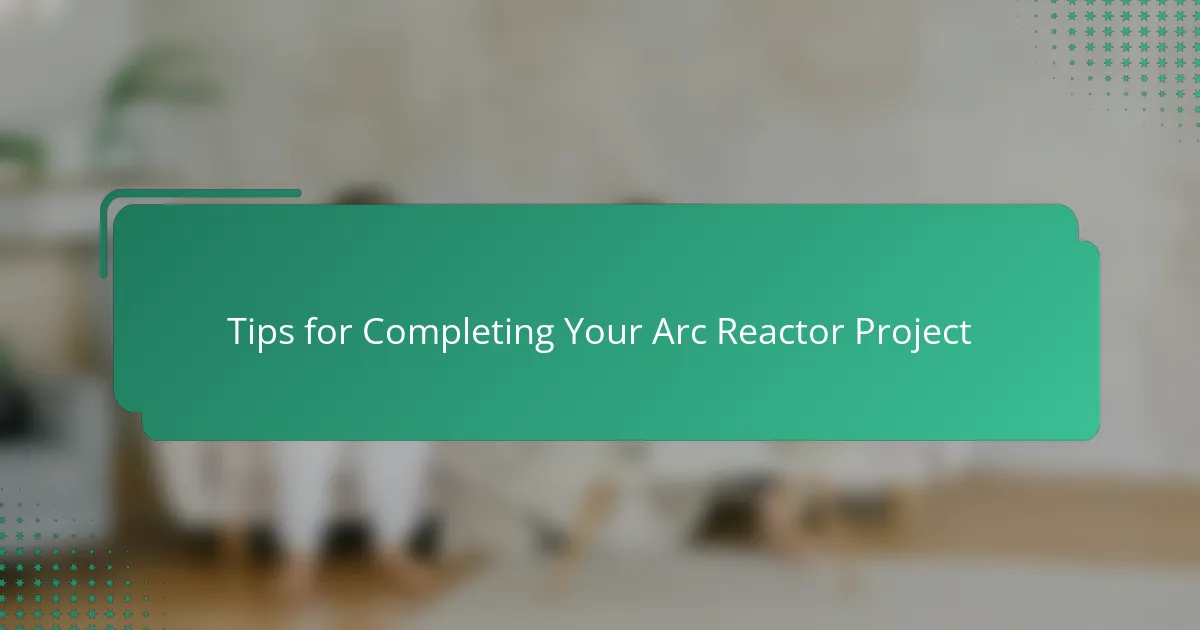
Tips for Completing Your Arc Reactor Project
One tip I can’t stress enough is to take your time with each step, especially when handling delicate parts like the LEDs and wiring. Rushing often led me to sloppy connections that caused frustrating setbacks. Have you ever spent hours troubleshooting something only to realize the problem was a tiny missed solder? Patience truly pays off in projects like this.
Another thing I found invaluable was organizing all my components before diving into assembly. Laying out screws, wires, and tiny metal pieces made the process feel less overwhelming and saved me from scrambling mid-build. I even labeled parts to keep track—a small habit that tricked me into feeling way more in control than I actually was.
Lastly, don’t be afraid to pause and reassess your progress. There was one moment when I was ready to glue everything together, but stepping back made me spot a misaligned piece that would have ruined the whole look. That pause gave me the chance to fix it without a hitch, and the extra effort made all the difference in achieving a professional finish. Have you ever caught a potential disaster just in time? Those little wins boost confidence more than you’d expect.

